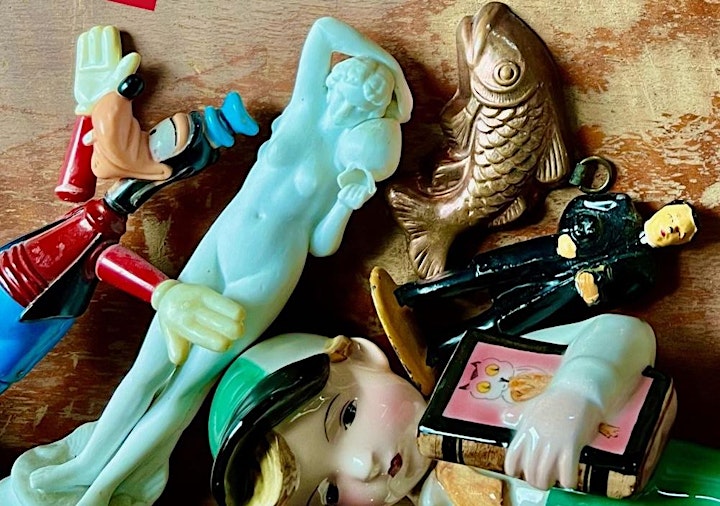
CREATING THE COLLECTION—Treasures & Stories from the Ashbery Resource Center
Join The Flow Chart Foundation for a very special panel discussion on the occasion of CREATING THE COLLECTION—Treasures and Stories from the Ashbery Resource Center, and exhibition of rare books, art, ephemera, and objects of poet/translator/playwright/artist/art-writer John Ashbery. Ashbery Estate Executor and bibliographer David Kermani and poets (and close Ashbery friends) Dara Barrois/Dixon and Eugene Richie will discuss items in the exhibet, how it came to be, and share memories of this most influential poet, art-writer, translator, playwright, and artist. The discussion will be moderated by Ashbery Resource Center Archivist Nina Boutsikaris.
___________
When David Kermani met John Ashbery, his future husband, on June 15th of 1970, Ashbery had published only five of his more than two dozen poetry collections, including Some Trees (for which he’d won the 1955 Yale Series of Younger Poets prize), and had worked in Paris as an art critic for nearly a decade. But he was still a few years away from earning the “triple crown” of Pulitzer Prize, National Book Award, and National Book Critics Award (for Self-Portrait in a Convex Mirror) that helped solidify his status as the most influential American poet of his time.
According to a 2005 New Yorker profile, Kermani wasn’t particularly interested in poetry at first, but one day, when he was helping to update Ashbery’s bio, he started digging into his papers, “and the more he rooted the more engrossed he became. He decided that the art writing, which Ashbery viewed as strictly work for hire, was actually a key to understanding the poetry, because although Ashbery notoriously refused to discuss his poems, many of the things he said about other people’s work could be applied to his own. Kermani concluded that if only people could see the same connections that he did they would understand the poetry better: what was needed was a bibliography.” So he created one.
When it was published in 1976, Kermani’s John Ashbery: A Comprehensive Bibliography (including his art criticism, and with selected notes from unpublished materials) “listed everything that Ashbery had ever written, down to the smallest introduction or pamphlet; all his published remarks; his translations; recordings of him reading his poetry; his few appearances on film; settings of his poetry to music; portraits painted of him; art works that incorporated his poems; a citation in Webster’s; and mentions of him in poems by other people.” In the process, Kermani, who was once Director of New York’s Tibor de Nagy Gallery, even earned a degree in library science from Columbia University.
This remarkable volume became the foundation for The Ashbery Resource Center (ARC), The Flow Chart Foundation’s physical library, archival repository, and online catalog, which has functioned since 1998 as a reference hub for all things Ashbery. Today, the ARC’s dynamic collection contains not only books and rare publications, but also music recordings that Ashbery listened to while he wrote, numerous pieces of visual art, beloved objects he surrounded himself with (many well-documented in “John Ashbery’s Nest,” a digital project at Yale led by Ashbery biographer Karin Roffman), and a variety of personal ephemera. The importance of the items with which Ashbery adorned his habitat cannot be overstated—as scholar Paul Norris recently wrote, Ashbery was a “domestic poet,”whose work recognized “that the home contains and organizes a plurality of objects, but also a plurality of thoughts, experiences, and social roles.”
As the ARC works to evolve into a welcoming study space and special collections repository—capable of offering rich opportunities for discovery, research, and creativity—The Flow Chart Foundation is sharing a few treasures that represent the scope and breadth of its resources and connections to its bibliographic beginnings. This exhibition showcases a tiny sampling of the ARC’s holdings; anyone interested in deeper exploration of the collections may make an appointment to visit the ARC.
Highlights of the exhibition include:
Rare ephemera and archival materials
Unique collaborative works
An unpublished film script
Ashbery’s collage materials and original artwork
The exhibition is curated by Ashbery Resource Center Archivist Nina Boutsikaris and Flow Chart Executive Director Jeffrey Lependorf.